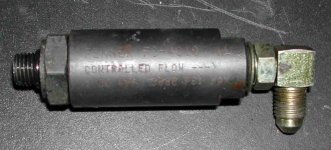First thing to do so that you don't have to guess if the cylinders or the valves are the problem is to have the implement on the ground, set the hydraulics how you want them. Then un plug the QDs, mark or measure the cylinder rods so that you will know if and how much the rods extend under a load. Raise the hitch so that the implement is in the air. Watch for 10 or 15 minutes. If the rod extends more than 1/16"- 3/32" in that time frame then the cylinder needs to be looked at. This is not to say that your valves don't have a problem also, but it lets you know if the cylinders are bad and it gives you a place to start at when trouble shooting. With no to little movement, then the cylinders are fine and the problem is with the control valves.
In my experience with the product that I sell, almost always the cylinders are fine and the leakage is from the control valves. How you choose to deal with that is for you to decide.
Thanks Brian. I plan to do that test the next time I have the rotary mower attached. I have put it off till now so I could get a feel for how much it was dropping, etc. Or maybe I was in denial.
The valve for the bucket leaking is understandable to me, since I've used it for 7 years. But the remote valves are practically unused until now. I'll start another thread with questions on that when I get some testing done.

